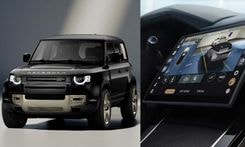Exclusive: Qualcomm's India Boss Says Its Tech Is Used By Almost All Indian Automakers

- Rajen Vagadia revealed how Qualcomm is doubling down on the auto sector
- He revealed that 5G would be a critical moment for cars in India as well
- According to Vagadia 5G adoption will be rapid in India despite delays
Qualcomm may be the biggest player in the mobility space with almost all Android phones being powered by its chipsets and even the iPhone is dependent on its modems. But slowly and surely, it is building up a big presence in the automotive space as well. Its India boss says that its solutions are equally pervasive in the automotive space in India. Rajen Vagadia, in an exclusive interview with carandbike revealed how Qualcomm was doubling down in the automotive space in India. The company's Snapdragon Cockpit and Digital Chassis have become the foundational software and silicon-based underpinnings to digital and electrical bits of the vehicle.
"What we have done is, as a part of one tech roadmap, we are extending all the goodness, and all that is being brought about as a revolution in the smartphone is now coming into the cars. Few things have changed. If you see it is not that connectivity is new for cars, telematics was available a few years back, it's still there, it's getting more sophisticated. Telematics is adopting new dimensions like C-V2X also. As you go, if telematics was some rudimentary stuff and connectivity in the car with your Bluetooth sometime back, it is far more complex today," explains Vagadia, who is the VP and President for Qualcomm in India and SAARC.

Vagadia is Qaulcomm's VP and President for India & SAARC
Photo Credit: Qualcomm
Vagadia elaborates that the capabilities of connectivity have permeated into the car and with technologies like 5G, the enhanced computational capabilities and modern security techniques have helped the car move to another dimension.
"Our behavior is also socially changing in a way that we are always connected. If you see how many times we touch our phone in the car, that itself indicates how distracted we are at times. A phone replaced your iPod or a music streaming music device or your radio. It generally started replacing a lot of products from our life like cameras. In the car, as we see the GPS got replaced by the phone itself. So now you have the phone, and you could travel using the map. 4G made that happen and 5G will bring far more other nuances. So, a very logical transformation happened that the car started leveraging a lot of the goodness in the progress of developments in the world of smartphones," Vagadia chimes in.
Vagadia's deputy, Uday Dodla, who is the senior director for automotive in India chimes in on how Qualcomm is leveraging the automotive market by offering a bouquet of technologies that automakers can take in en masse or pick and choose.
"So, it's like a menu, right? OEMs have the choice of getting, the full combo meal, where they get everything, they get connectivity, they get cockpit, they get infotainment, they get, you know, ADAS and of course, it has several flavours. You can go from L2, L2+ or all the way to L4. And you have connectivity, or an OEM can say, 'you know what, I am not ready for ADAS yet but let me start with a cockpit and connectivity.' So, you can mix and match, you can take all four, you can take three, you can take two more, but most cars now, definitely have one thing as table stakes, which are two things — infotainment, if not a full cockpit, at least in infotainment and connectivity," says Dodla.

It is a suite of software, services and chipsets that enable autonomy, infotainment, services and connectivity in the car
Vagadia claims that the technology-facilitated by Qualcomm has now normalised the idea of software updates. He cited the example of the new Mahindra XUV700 which leverages the Snapdragon Cockpit solution that Qualcomm provides.
"The mindset has gone to something which is more sophisticated in the terms of expressing the experience of the engagement with the car that was a software. This is so beautiful, that the amount of potential the automotive industry has, in the next 10 years up, probably we'll be living the best time in auto history, I would assume. Because nothing like that has happened in probably 30-40 years in the whole history of evolution of the engine in the car. It did get sophisticated. Now we're talking about efficiencies driven by Qualcomm, and we are famous for that. Right? We come from the basis of low power, high-efficiency sort of thing in the world of EV. A lot of what we do is helping them get more mileage out of the car. It's brilliant," he explained.
Dodla explains that Qualcomm's single platform also allows OEMs do to do basic AI, not just advanced levels of computing required for ADAS or self-driving. He added that Qualcomm is working on a singular platform that would be a one-stop-shop for all, especially in the context of vehicles from emerging markets where the need to go to different suppliers like MobileEye, Visteon, or Qualcomm wouldn't exist.
"The single platform combines, compute essentially, infotainment, it combines your connectivity, so be it 4G Wi-Fi, Bluetooth, it also enables basic on-device AI. I'm not saying ADAS, but basic AI, so things such as ride analytics, ride metrics right on the fly. So, we are looking at an all-in-one solution also, especially for emerging markets. Again, emerging markets are where the budgets are tight on electronics, and we realised probably a couple of years ago what works for Mahindra will not work for a Maruti for example. Or what works for a four-wheeler does not work for a two-wheeler, the budgets just don't allow that. So, we're working on another solution, which kind of enables a lot of these technologies to come on a single platform," he said.
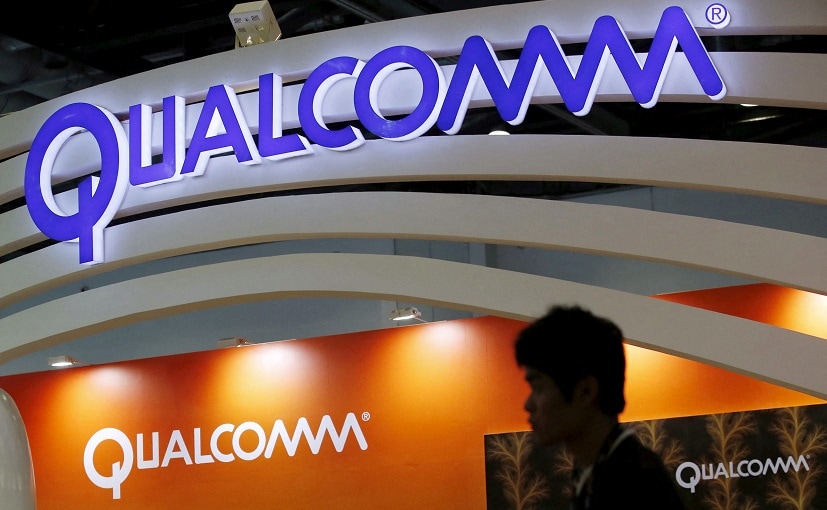
Qualcomm's silicon powers the in-car experiences of GM, Renault, Mahindra, Maruti Suzuki to make a few
Vagadia compares the impending launch of 5G in India to what happened with 4G and smartphone connectivity in 2016. In the case of 5G, it will be an inflection point for the automotive industry. He believes that 5G adoption will be faster than 4G because the auction first happened for 4G and then trials were done by the carriers. With 5G the trials are already done.
"I would say that as it's becoming affordable and that's one of the key objectives of us as a company, and we've done that, that's a KPI I'm judged or benchmarked on. That is how you make 5G pervasively available in India, in the device ecosystem first, this time the network is coming a bit later. So, the leverage which auto companies in India will have access to that 5G technology with 5G, there is so much more you can go in the automobile industry. So, we can talk and talk about how 5G is more relevant for the auto industry," said Vagadia.
He believes that 5G will enable customised experiences that will be defined as the car becomes more and more autonomous. It will be a transition similar to the way we as humans had with the phone, from it being a base end-to-end communications platform to a jack of all trades.
"Likewise, the car is going to do a lot of the work for the driver and the driver is going to use this time more effectively for many other things and hence what he expects the behavior of the consumer. What he expects from the smartphone today is actually what he's going to expect from the car tomorrow and say, ``I want this," Vagadia explained.

Qualcomm's infotainment stack is being used by numerous OEMs
Vagadia was also complimentary of the Indian OEMs which were driving the adoption of smart technology first in India more than the foreign automakers. He believes that India will not be left behind in the 5G wave because of its late adoption of the standard.
"And India is still not out. I don't think so. Because of the way you see all of these features coming and they're coming faster, exactly like 4G, and like 5G, India will adapt to these features far faster than any other economy in the world. I think this is the right place, we have very good Indian companies who are ready to bet. The beauty of this country is that a lot of these car companies in India, the Indian brands are so strong. And they are so forward-looking that a lot of these innovations are coming from them, as you can see," he said.
"The good thing and proud of as Indian is that a lot of these Indian companies whether it is Tata, Maruti, or Mahindra, you've seen some of them to be so advanced in their thought processes," he added.
Qualcomm's expertise has also enabled a new generation of EV startups like Ola and Ather. Ola's S1 pro scooter uses Qualcomm's solutions. Its experiences are also driving the differentiation in the in-car experiences that one has with rudimentary things like the infotainment system.
"The other bit that sort of builds on top of it is that every car comes with an infotainment system, and they have an UI but (things) like responsiveness; how easy to use, how intuitive that experience is, are very relevant in the end buying decision and most people kind of don't get that in even the standard reviews that come out and so like that's where it becomes important to know the underlying technology is Qualcomm powered which is the supplier behind," he said.
Latest News
 car&bike Team | Jan 12, 2026Updated Royal Enfield Goan Classic 350 Launched: Gets Slip And Assist ClutchThe updated Goan Classic also gets a faster Type-C charging port.1 min read
car&bike Team | Jan 12, 2026Updated Royal Enfield Goan Classic 350 Launched: Gets Slip And Assist ClutchThe updated Goan Classic also gets a faster Type-C charging port.1 min read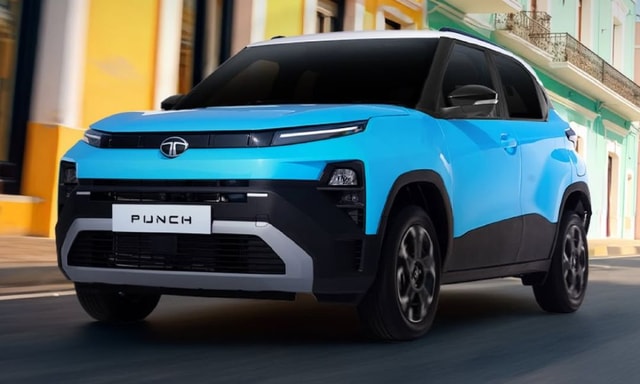 Jaiveer Mehra | Jan 12, 2026Tata Punch Facelift Launch Tomorrow: What To ExpectUpdated internal combustion Punch gets a design in line with its larger siblings as well as a new engine option.3 mins read
Jaiveer Mehra | Jan 12, 2026Tata Punch Facelift Launch Tomorrow: What To ExpectUpdated internal combustion Punch gets a design in line with its larger siblings as well as a new engine option.3 mins read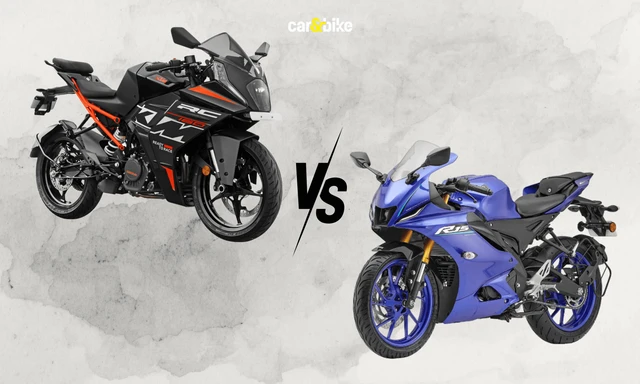 Jafar Rizvi | Jan 9, 2026KTM RC 160 vs Yamaha R15: Specifications, Features, Prices ComparedKTM’s new RC 160 goes head-to-head with the Yamaha R15 in the entry-level sportbike category. Here is how the two fare on paper.1 min read
Jafar Rizvi | Jan 9, 2026KTM RC 160 vs Yamaha R15: Specifications, Features, Prices ComparedKTM’s new RC 160 goes head-to-head with the Yamaha R15 in the entry-level sportbike category. Here is how the two fare on paper.1 min read Amaan Ahmed | Jan 9, 2026Suzuki E-Access Launched At Rs 1.88 Lakh; LFP Battery Promises 95 KM RangeOriginally confirmed for a June 2025 launch, Suzuki's first electric two-wheeler for India has finally arrived almost a year after making its global debut at Auto Expo 2025.3 mins read
Amaan Ahmed | Jan 9, 2026Suzuki E-Access Launched At Rs 1.88 Lakh; LFP Battery Promises 95 KM RangeOriginally confirmed for a June 2025 launch, Suzuki's first electric two-wheeler for India has finally arrived almost a year after making its global debut at Auto Expo 2025.3 mins read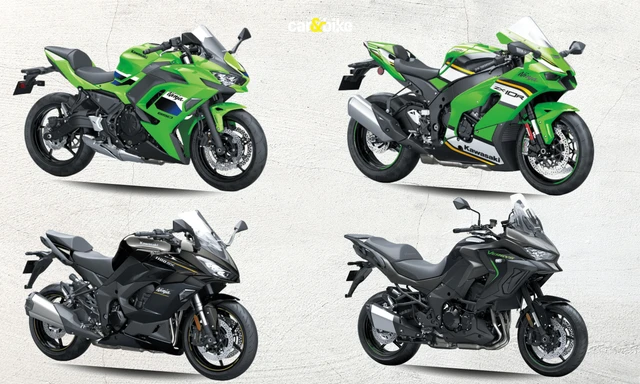 car&bike Team | Jan 9, 2026Kawasaki Ninja, Versys Models Offered With Discounts Of Up To Rs 2.50 LakhThe Ninja ZX-10R is offered with maximum benefits, followed by the Ninja 1100SX and Versys 1100.1 min read
car&bike Team | Jan 9, 2026Kawasaki Ninja, Versys Models Offered With Discounts Of Up To Rs 2.50 LakhThe Ninja ZX-10R is offered with maximum benefits, followed by the Ninja 1100SX and Versys 1100.1 min read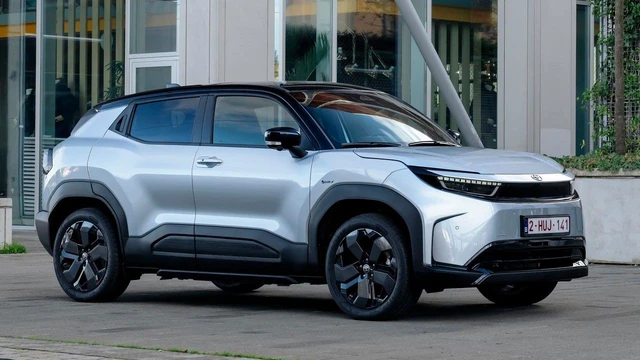 Bilal Firfiray | Jan 9, 2026Toyota Urban Cruiser EV: What To ExpectToyota will be introducing an all-electric vehicle for the first time in India. It is the Toyota-badged version of the soon-to-be-launched Maruti Suzuki e-Vitara, and here’s everything we expect from it.1 min read
Bilal Firfiray | Jan 9, 2026Toyota Urban Cruiser EV: What To ExpectToyota will be introducing an all-electric vehicle for the first time in India. It is the Toyota-badged version of the soon-to-be-launched Maruti Suzuki e-Vitara, and here’s everything we expect from it.1 min read
 Bilal Firfiray | Jan 9, 2026Toyota Urban Cruiser Hyryder: 10,000 km Long-Term ReviewAfter spending over three months and 10,000 km with the Toyota Urban Cruiser Hyryder Hybrid, we were impressed by its real-world mileage, seamless hybrid, practical comfort, and Toyota reliability. Is it the best C-SUV then?5 mins read
Bilal Firfiray | Jan 9, 2026Toyota Urban Cruiser Hyryder: 10,000 km Long-Term ReviewAfter spending over three months and 10,000 km with the Toyota Urban Cruiser Hyryder Hybrid, we were impressed by its real-world mileage, seamless hybrid, practical comfort, and Toyota reliability. Is it the best C-SUV then?5 mins read Seshan Vijayraghvan | Jan 8, 20262026 Mahindra XUV 7XO Review: Big On Tech, Bigger On ComfortThe new Mahindra XUV 7XO is flashier, feature packed, and comes with more advanced tech. But are the changes just incremental or actually substantial?1 min read
Seshan Vijayraghvan | Jan 8, 20262026 Mahindra XUV 7XO Review: Big On Tech, Bigger On ComfortThe new Mahindra XUV 7XO is flashier, feature packed, and comes with more advanced tech. But are the changes just incremental or actually substantial?1 min read Preetam Bora | Jan 10, 2026Simple One Gen 2 First Ride Review: 265 km Claimed Range!The Gen 2 model of Simple Energy’s first electric scooter gets a fair few updates, including new features, tech, more range and lighter weight. We spent a couple of hours with the Simple One Gen 2 to find out if it manages to impress.6 mins read
Preetam Bora | Jan 10, 2026Simple One Gen 2 First Ride Review: 265 km Claimed Range!The Gen 2 model of Simple Energy’s first electric scooter gets a fair few updates, including new features, tech, more range and lighter weight. We spent a couple of hours with the Simple One Gen 2 to find out if it manages to impress.6 mins read Amaan Ahmed | Jan 3, 2026VLF Mobster 135 300 KM Review: Fun But FlawedA 125 cc scooter with Italian design and Chinese genes is a rare combination, and while some may be tempted to dismiss it because of its origins, the VLF Mobster shows 125s can also be exciting – but not without compromises.11 mins read
Amaan Ahmed | Jan 3, 2026VLF Mobster 135 300 KM Review: Fun But FlawedA 125 cc scooter with Italian design and Chinese genes is a rare combination, and while some may be tempted to dismiss it because of its origins, the VLF Mobster shows 125s can also be exciting – but not without compromises.11 mins read Preetam Bora | Dec 30, 2025TVS Orbiter Review: Real-World Performance and Range TestedThe TVS Orbiter is a promising electric scooter promising decent range, practicality and pricing. But is there any reason to avoid it? We spent a few days getting to know it better.9 mins read
Preetam Bora | Dec 30, 2025TVS Orbiter Review: Real-World Performance and Range TestedThe TVS Orbiter is a promising electric scooter promising decent range, practicality and pricing. But is there any reason to avoid it? We spent a few days getting to know it better.9 mins read

